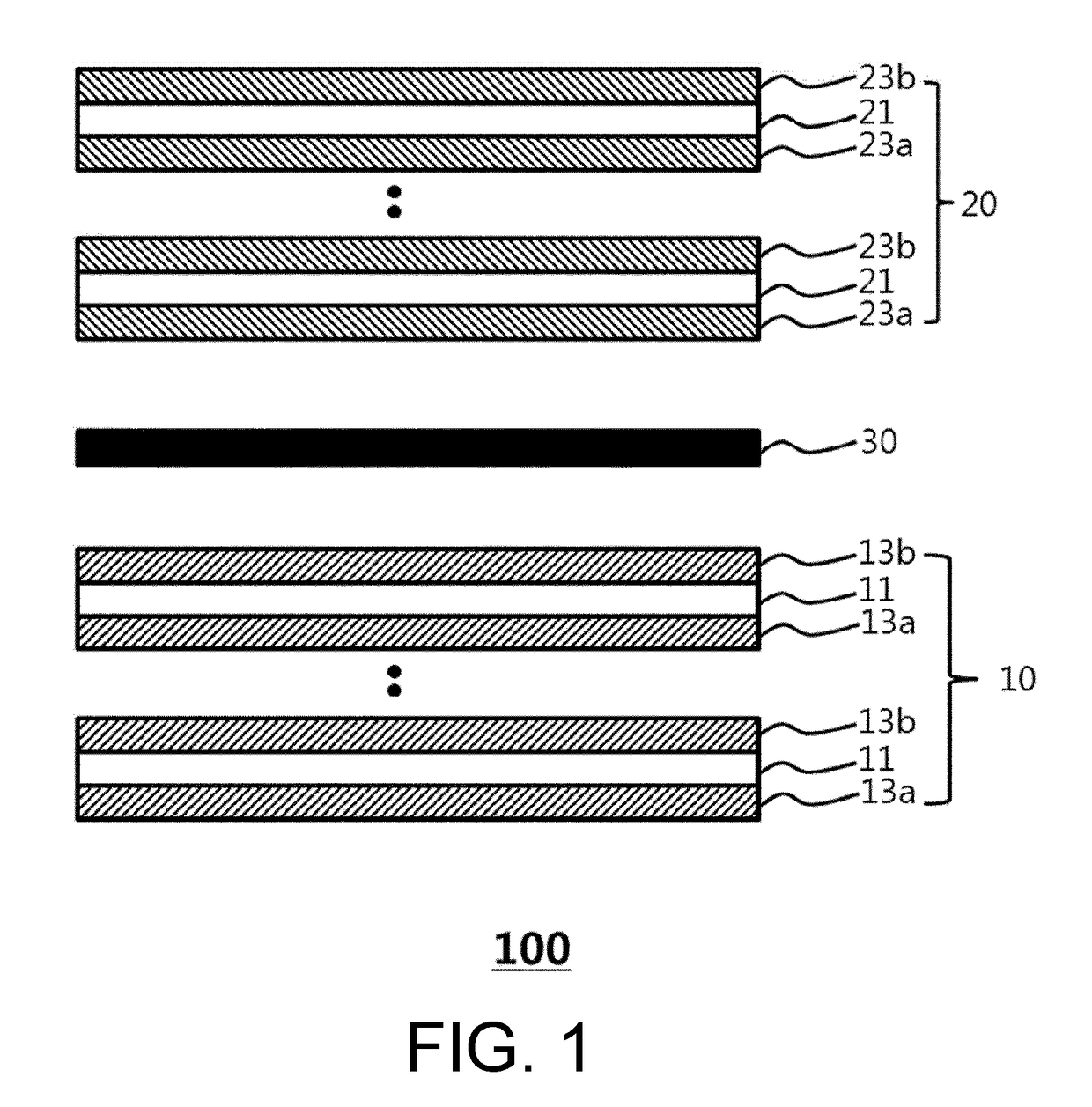Electrode assembly for lithium secondary battery, and lithium secondary battery and battery module including same
a lithium secondary battery and electrode assembly technology, applied in the manufacture of cell components, electrochemical generators, final product manufacturing, etc., can solve the problems of increased cost, decreased lithium stability, and increased battery weight, and achieve enhanced charge and discharge properties and easy linkage
- Summary
- Abstract
- Description
- Claims
- Application Information
AI Technical Summary
Benefits of technology
Problems solved by technology
Method used
Image
Examples
example 2
[0110]A lithium-sulfur battery was prepared in the same manner as in Example 1 except that the negative electrode was prepared using a negative electrode current collector having an area of 95% with respect to the negative electrode mixture area.
example 3
[0111]A lithium-sulfur battery was prepared in the same manner as in Example 1 except that the negative electrode was prepared using a negative electrode current collector having an area of 98% with respect to the negative electrode mixture area.
experimental example 1
[0113]For the lithium-sulfur batteries prepared in Examples 1 to 3 and Comparative Example 1, changes in the charge and discharge properties when operating the batteries after resetting for 5 days were tested using a charge and discharge measuring device. Using each of the prepared batteries, charge and discharge were repeated 20 cycles each with 0.1 C / 0.1 C charge / discharge to measure initial discharge capacity and a capacity retention rate (%) at the 20th cycle with respect to the initial capacity, and the results are shown in the following Table 1 and FIG. 7.
TABLE 1Initial Discharge Capacity (mAh / g)Example 11037.8Example 21035.7Example 31014.5Comparative Example 1895.1
[0114]Through Table 1, it was identified that Examples had excellent initial discharge capacity compared to Comparative Example. Specifically, when referring to FIG. 7, initial discharge capacity in Example 1 was 1037.8 mAh / g and initial discharge capacity in Comparative Example 1 was 895.1 mAh / g, and it was seen th...
PUM
| Property | Measurement | Unit |
|---|---|---|
| area | aaaaa | aaaaa |
| circumference | aaaaa | aaaaa |
| width | aaaaa | aaaaa |
Abstract
Description
Claims
Application Information
 Login to View More
Login to View More - R&D
- Intellectual Property
- Life Sciences
- Materials
- Tech Scout
- Unparalleled Data Quality
- Higher Quality Content
- 60% Fewer Hallucinations
Browse by: Latest US Patents, China's latest patents, Technical Efficacy Thesaurus, Application Domain, Technology Topic, Popular Technical Reports.
© 2025 PatSnap. All rights reserved.Legal|Privacy policy|Modern Slavery Act Transparency Statement|Sitemap|About US| Contact US: help@patsnap.com



